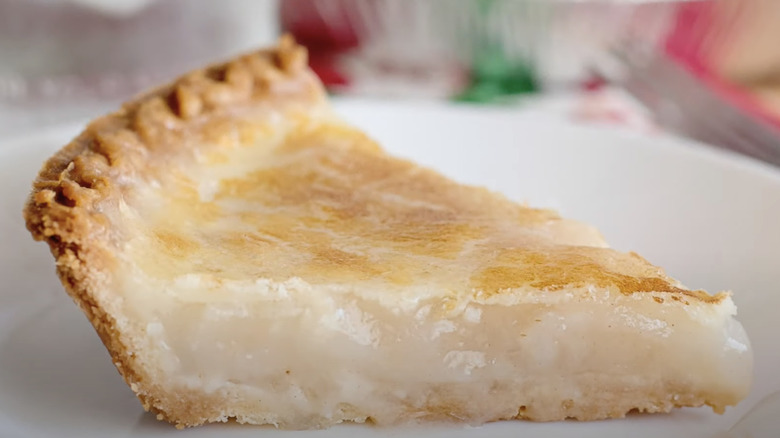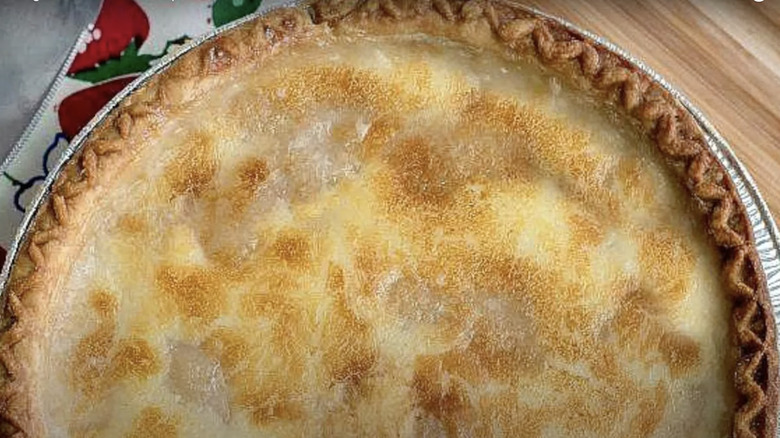The Intriguing History Of Water Pie
Water isn't an ingredient normally associated with pie fillings. Sure, pie crust recipes often call for water — but in the filling? Not so much.
But that's not the case with water pie, also known as hard times pie, a recipe born out of the Great Depression, per Atlas Obscura. A pie filling composed mainly of water might sound nutty, but it made sense during the harsh economic times of the 1930s. Whenever there is a scarcity of resources, creativity is necessary — and this is especially true in the kitchen.
Dessert is often considered a luxury, so it's no wonder that people during the Depression cobbled together something sweet using the scant ingredients they had on hand, according to Kitchenaid. This led to simple recipes.
Home cooks often had to make substitutions, like vinegar and baking soda instead of eggs and dairy. These recipes give us a window into what their world was like during this time in history.
Here's how water pie is made.
The magic of water pie
So how does a pie filling made with water not just turn into a soupy, soggy mess? The filling contains four other ingredients besides the water: butter, sugar, flour, and vanilla extract.
Atlas Obscura explains that starch is the key. Most custard-like pies rely on eggs, but this custard is thickened with starch. With the heat, "the sugar melts, the butter emulsifies, and the flour leaches just enough starch to bind the whole mixture." The result is a colorless custard instead of a creamy one.
Recently, Depression-era recipes like water pie have enjoyed something of a comeback, thanks to the COVID-19 pandemic and social media, says Food52. Many people in lockdown turned to baking with whatever they had in the pantry.
So, the next time you're scrounging through your cupboards and want to bake something sweet, remember water pie — and the resourcefulness of home cooks during the Great Depression.

